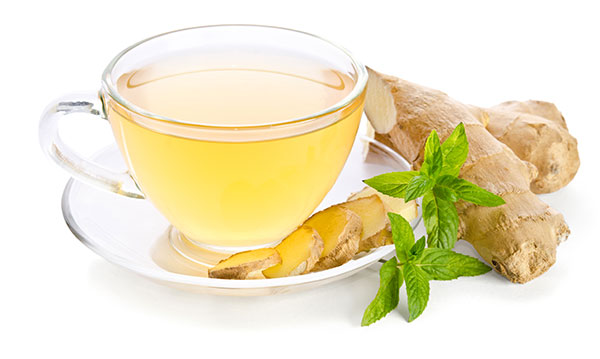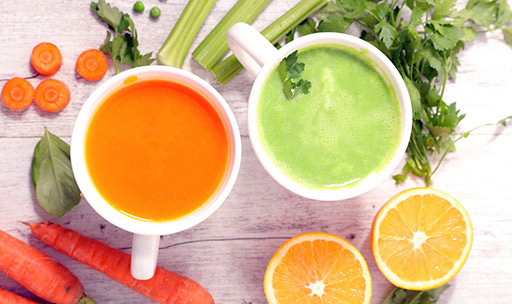A sunny, windless spring day increases Kapha just as much as inclement, grimy weather with rain, fog and damp cold. Neither a recliner nor the sofa should be your first choice now! On the contrary, physical activity in the fresh air reduces Kapha and boosts your metabolism.
At least 30 minutes of brisk walking daily is the best now, but without overexerting – you should still be able to breathe through the nose. Ayurveda recommends exercising only at half your maximum capacity, because too much exertion can increase Vata Dosha.
Most people have mixed predominance of two or all three Doshas. If you rely on your own body intelligence, you will intuitively feel what is most beneficial for you now.
In addition to physical activity to stimulate metabolism, there are other simple ways to eliminate excess Kapha and Ama.
First, these are the signs that can tell you if your body is currently burdened:
- Fatigue and sluggishness;
- tendency to pressure in the head, especially in the forehead area;
- persistent cold and thick mucus;
- joint pain and morning stiffness;
- digestive difficulties, especially constipation;
- bloating and nausea;
- water retention, e.g. in the legs and face;
- white coating on the tongue.
If you recognize these symptoms, it is worthwhile to integrate the following things into your everyday life:
Drink hot ginger water regularly
Add four to five slices of fresh ginger to about one liter of water and let it simmer for 15 to 20 minutes. Remove the ginger slices (please don’t reuse), then pour the ginger water into a thermos. Drink it as hot as is comfortable, preferably half a cupful every half hour. You will notice how this stimulates your digestion and gives you a feeling of freshness and lightness.

Reduce your intake of Kapha-enhancing animal protein
Generally speaking, Ayurveda classifies cow’s milk and products like freshly made yogurt as “sattvic”, i.e. beneficial to health, in contrast to sour milk products such as soured milk, curd cheese and cheese, which form mucus and are more difficult to digest.
We recommend using organic quality milk, preferably Demeter quality in glass bottles. Fresh milk should be boiled briefly – preferably with aromatic spices – and drunk warm.
During the next few weeks, however, you should reduce your milk consumption and especially limit the consumption of sour milk products, as well as foods that are difficult to digest, such as meat, fish, heavily fried foods and preserved products. That way you’ll be on the safe side as far as your Kapha balance is concerned.
Take in plenty of fresh and natural vitamins

Eat fresh, natural vitamins, i.e. fruits and vegetables as much as you like. You can cook the vegetables (and also some fruits) well, as long as you don’t overcook them. Although some vitamins will be lost, your digestive tract can absorb vitamins more easily from well-cooked food. This can be especially helpful for people with intestinal disorders, such as irritable bowel syndrome.
Have regular liquid days

A weekly relief day or liquid day is generally highly recommended in Ayurveda. Especially people with Pitta or Kapha predominance benefit from it. For people with Vata predominance, such liquid days are only recommended when you feel stable and well-anchored.
Around Christmas, Easter and at other festive occasions, when we tend to eat too much and too rich food, drink alcohol, and get very little exercise, inserting one day to disburden can bring great relief. It is a proactive way to prevent overloading one’s physiology. Without it, the body can’t properly process all that food, typically taken late in the day as well, and literally clogs up.
Ayurveda has a name for the residue of incomplete digestion: Ama. Ama clogs up the delicate passageways in the body, which leads to many disorders.
To clear out Ama, Ayurveda advises having periodic liquid diet days. According to the classical texts, those who take only liquids one day a week live many years longer in full health.
This weekly routine is most important for people with a surplus of Kapha. Also people with a predominance of Pitta Dosha, who have a tendency to eat more than they should, benefit greatly from liquid fasting one day a week.
What to eat on your liquid day

On your liquid fasting day, you can still have lots of variety: fresh vegetable soups, rice soup and other cereal soups, teas, freshly-pressed juices from various fruits and vegetables. Please note that dairy products are “out” on this day. Drink hot water every half an hour; also keep half an hour between drinking water and taking soup or juice. An important point is to make sure that you feel good throughout; there should be no forcing yourself or going hungry! The next day you slowly return to your normal diet.
Such a regular “unburdening day” is of great benefit: by getting rid of large amounts of Ama once a week you remove the grounds for latent disorders and allow existing ones to improve gradually.
If you want to go beyond this, then a 10-day cleansing program is recommended, especially in spring and autumn.
The 10-day cure to eliminate Ama
Abstaining from food altogether for detoxification purposes would increase Vata Dosha and, moreover, reduce Agni – the digestive power. In order to avoid these unfavorable side effects, Ayurveda recommends the following gentle and profound detoxification cure for the effective elimination of water-soluble residues from the body. You should only do this without medical guidance if you feel generally stable and healthy. In case you have an active medical condition, the cure could be too strenuous for you. If you are not sure whether an Ama cure is suitable for you, please call us for a short consultation under the following phone number: +49 2603 9407-0.
Practical points for your Ama cure
- Half an hour before breakfast, drink water with lemon and honey. This is the juice from half a lemon and a spoonful of unheated honey mixed into a glass of lukewarm water (max. 40 °C).
- Breakfast: If you are hungry, drink freshly pressed fruit juice or vegetable juice.
- Lunch: Have a light, freshly prepared meal with plenty of vegetables. Dahl is easy to digest, yet provides nourishing vegetable proteins. Eat your fill, but pay attention to the subtle sign of your satiety point and don’t eat past it.
- Dinner: As in the morning, Ayurveda recommends freshly pressed juice from fruits or vegetables, but also liquid soups from grain, rice, or vegetables. It is best to eat before 6 p.m.
- Snacks: If hunger pinches, feel free to have another fresh juice. However, a healthy feeling of hunger doesn’t do any harm, on the contrary. If you can do it comfortably, forgo the snacks. Your body will thank you for it and break down even more Ama.
- Hot water: Throughout the day, drink hot water that has been boiled for 10 minutes. Boil it in the morning and keep it in a thermos. Drink it as hot as is comfortable, in small sips, about a half to a full cup each time. The hot water is the decisive factor for the success of your cure. It penetrates the body’s cells, binds to water-soluble toxins and effectively eliminates Ama.
- But: don’t drink water during half an hour before and one and a half hours after meals. It dilutes the digestive juices, meaning that your food will be digested less thoroughly.
- Get plenty of fresh air during this time, go to bed before 10 p.m. and make sure you get a good night’s sleep.
After this cure of gentle cleansing and elimination of toxins, you will feel like newborn, ready to welcome the spring with vitality and vigor.
Of course, for a particularly deep purification, we recommend a traditional Panchakarma course of treatment. In Bad Ems, you can experience an authentic Panchakarma cure under medical supervision and with specially trained, empathetic therapists, without traveling far. Here in the heart of Germany you will find Europe’s leading private clinic for Ayurveda.
More information about the Maharishi AyurVeda Health Center Bad Ems

© Maharishi Ayurveda Health Centre Bad Ems